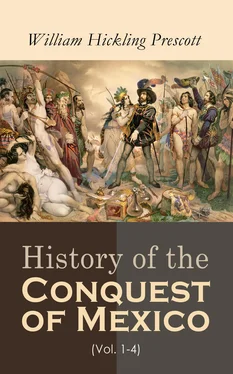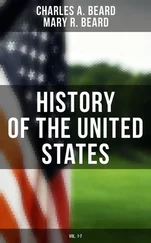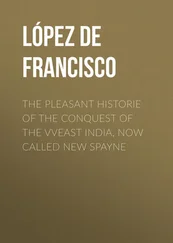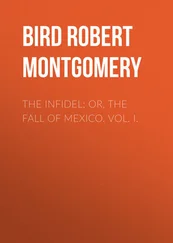[17]Anahuac, according to Humboldt, comprehended only the country between the fourteenth and twenty-first degrees of north latiude. (Essai politique, tom. i. p. 197.) According to Clavigero, it included nearly all since known as New Spain. (Stor. del Messico, tom. i. p. 27.) Veytia uses it, also, as synonymous with New Spain. (Historia antigua de Méjico (Méjico, 1836), tom. i. cap. 12.) The first of these writers probably allows too little, as the latter do too much, for its boundaries. Ixtlilxochitl says it extended four hundred leagues south of the Otomi country. (Hist. Chichimeca, MS., cap. 73.) The word Anahuac signifies near the water . It was, probably, first applied to the country around the lakes in the Mexican Valley, and gradually extended to the remoter regions occupied by the Aztecs and the other semi-civilized races. Or possibly the name may have been intended, as Veytia suggests (Hist. antig., lib. 1, cap. 1), to denote the land between the waters of the Atlantic and Pacific.{*}
{*} [This suggestion of Veytia is unworthy of attention,—refuted by the actual application and appropriateness of the name, and by the state of geographical knowledge and ideas at the period when it must have originated. A modern traveller, describing the appearance of the great plains as seen from the summit of Popocatepetl, remarks, “Even now that the lakes have shrunk to a fraction of their former size, we could see the fitness of the name given in old times to the Valley of Mexico, Anahuac , that is, By the water-side.” Tylor, Anahuac; or Mexico and the Mexicans, Ancient and Modern (London, 1861), p. 270.—K.]
[18]Clavigero talks of Boturini’s having written “on the faith of the Toltec historians.” (Stor. del Messico, tom. i. p. 128.) But that scholar does not pretend to have ever met with a Toltec manuscript himself, and had heard of only one in the possession of Ixtlilxochitl. (See his Idea de una nueva Historia general de la América Septentrional (Madrid, 1746), p. 110.) The latter writer tells us that his account of the Toltec and Chichimec races was “derived from interpretation” (probably of the Tezcucan paintings), “and from the traditions of old men;” poor authority for events which had passed centuries before. Indeed, he acknowledges that their narratives were so full of absurdity and falsehood that he was obliged to reject nine-tenths of them. (See his Relaciones, MS., no. 5.) The cause of truth would not have suffered much, probably, if he had rejected nine-tenths of the remainder.{*}
{*} [Ixtlilxochitl’s language does not necessarily imply that he considered any of the relations he had received as false or absurd, nor does he say that he had rejected nine-tenths of them. What he has written is, he asserts, “the true history of the Toltecs,” though it does not amount to nine-tenths of the whole (“de lo que ello fué”), i.e. , of what had been contained in the original records; these records having perished, and he himself having abridged the accounts he had been able to obtain of their contents, as well for the sake of brevity as because of the marvellous character of the relations (“son tan estrañas las cosas y tan peregrinas y nunca oidas”). The sources of his information are also incorrectly described; but a further mention of them will be found in a note at the end of this Book.—K.]
[19]Ixtlilxochitl, Hist. Chich., MS., cap. 2.—Idem, Relaciones, MS., no. 2.—Sahagun, Historia general de las Cosas de Nueva-España (México, 1829), lib. 10, cap. 29.—Veytia, Hist. antig., lib. 1, cap. 27.
[20]Sahagun, Hist. de Nueva-España, lib. 10, cap. 29.
[21]Sahagun, ubi supra.—Torquemada, Monarch. Ind., lib. 1, cap. 14.
[22]Description de l’Égypte (Paris, 1890), Antiquités, tom. i. cap. 1. Veytia has traced the migrations of the Toltecs with sufficient industry, scarcely rewarded by the necessarily doubtful credit of the results. Hist. antig., lib. 2, cap. 21-33.
[23]Ixtlilxochitl, Hist. Chich., MS., cap. 73.
[24]Veytia, Hist. antig., lib. 1, cap. 33.—Ixtlilxochitl, Hist. Chich., MS., cap 3.—Idem, Relaciones, MS., nos. 4, 5.—Father Torquemada—perhaps misinterpreting the Tezcucan hieroglyphics—has accounted for this mysterious disappearance of the Toltecs by such fee-faw-fum stories of giants and demons as show his appetite for the marvellous was fully equal to that of any of his calling. See his Monarch. Ind., lib. 1, cap. 14.
[25][This supposition, neither adopted nor rejected in the text, was, as Mr. Tylor remarks, “quite tenable at the time that Prescott wrote,” being founded on the statements of early writers and partially supported by the conclusions of Mr. Stephens, who believed that the ruined cities of Oaxaca, Chiapas, Yucatan, and Guatemala dated from a comparatively recent period, and were still flourishing at the time of the Spanish Conquest; and that their inhabitants, the ancestors, as he contends, of the degenerate race that now occupies the soil, were of the same stock and spoke the same language as the Mexicans. (Incidents of Travel in Central America, Chiapas, and Yucatan.) But these opinions have been refuted by later investigators. Orozco y Berra, in an elaborate and satisfactory examination of the question, discusses all the evidence relating to it, compares the remains in the southern provinces with those of the Valley of Mexico, points out the essential differences in the architecture, sculpture, and inscriptions, and arrives at the conclusion that there was “no point of contact or resemblance” between the two civilizations. He considers that of the southern provinces, though of a far higher grade, as long anterior in time to the Toltec domination,—the work of a people which had passed away, under the assaults of barbarism, at a period prior to all traditions, leaving no name and no trace of their existence save those monuments which, neglected and forgotten by their successors, have become the riddle of later generations.{*} Geografía de las Lenguas de México, pp. 122-131. See also Tylor, Anahuac, p. 189, et seq.—K.
{*} [Charnay (Ancient Cities of the New World) holds that both Mitla and Palenque are of Toltec origin. He has no doubt whatsoever concerning Palenque. This he thinks was a Holy City whose inhabitants dispersed at the first alarm of the Conquest (p. 245). (See, further, p. 246.) Dr. Brinton holds that Father Duran, Historia de las Indias de Nueva España, Tezozomoc, Croníca Mexicana, and the Codex Ramirez identify the Toltecs with the Aztecs. As John Fiske puts it, “it is well to beware, however, about meddling much with these Toltecs.” Mr. Fiske urges like caution concerning the Chichimecs. Bandelier (Archæological Tour, p. 192) points out that Ixtlilxochitl, the historian of the Chichimecs, “wrote for an interested object, and with a view of sustaining tribal claims in the eyes of the Spanish government.”—M.]
[26] Tezcuco signifies “place of detention;” as several of the tribes who successively occupied Anahuac were said to have halted some time at the spot. Ixtlilxochitl, Hist. Chich., MS., cap. 10.{*}
{*} [“Über die Etymologie lässt sich nichts sicheres sagen,” says Buschmann, “so zuversichtlich auch Prescott, wohl nach Ixtlilxochitl, den Namen durch place of detention übersetzt.” Uber die aztekischen Ortsnamen, S. 697.—K.]
[27][It is difficult to reconcile the two statements that the Toltecs “were the true fountains of the civilization which distinguished this part of the continent in later times,” and that they “disappeared from the land as silently and mysteriously as they had entered it,” leaving an interval of more than a century before the appearance of the Aztecs and the Acolhuans. If the latter received from the former the knowledge of those arts in which they speedily rivalled them, it must have been by more direct communication and transmission than can be inferred from the mention of a small fraction of the Toltec population as remaining in the country,—a fact which has itself the appearance of having been invented to meet the difficulty. Orozco y Berra compares this transitional period with that which followed the overthrow of the Roman Empire; but if in the former case there was, in his own words, “no conquest, but only an occupation, no war because no one to contend with,” the analogy altogether fails. Brasseur de Bourbourg reduces the interval between the departure of the Toltecs and the arrival of the Chichimecs to a few years, and supposes that a considerable number of the former inhabitants remained scattered through the Valley. If, however, it be allowable to substitute probabilities for doubtful relations, it is an easier solution to believe that no interval occurred and that no emigration took place.—K.]
Читать дальше












